PART 10. WHAT'S THE PLAN? |  |
Planning the project |
| Objectives |
|
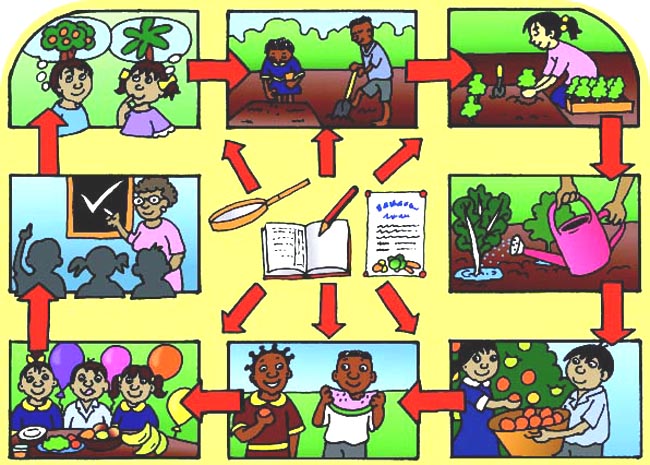
We have looked at many aspects of garden project planning. But there are some other questions we shouldn't neglect. In particular:
But before thinking about any of these, establish your project's identity. Get students to find
Put these together into a poster - for example:
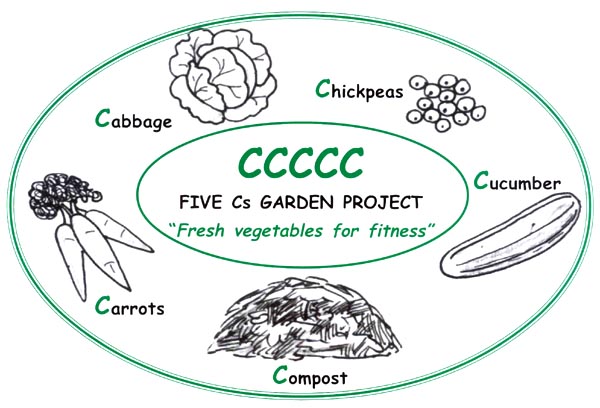
A. OBJECTIVES
Your project will reflect your general aims, practical and educational. Let's look first at the practical objectives.
1. Practical objectives
Being specific about what you hope to achieve is an exercise in realism and practical thinking. Ask yourself and your garden group these questions:
Record the answers as in the Table below, so that they can be compared with what actually happens.
Older students can join in this exercise. They should be encouraged to estimate yields as well - e.g. the number of cabbages, the weight of carrots. Younger pupils can name the crops and foods that the project is aiming to grow, but they should not be expected to quantify them.
Objectives and targets for the Five C's project
| General aim | Specific targets (first year) | |
| What will the garden produce in the first year? | Vegetables/fruits rich in vitamins and minerals. | 1 bed of cabbages, 2 of carrots, 4 of cowpeas, 2 of cucumber and pumpkin. Some tomatoes, onions and green pepper for flavour. Mint for drinks and to keep away pests. |
| What are we growing it for? | To supplement school meals (maize and beans) with vegetable dishes and snacks. | One vegetable dish per week for all, for 10 weeks, including cowpea leaves, pumpkin leaves, wild okra and amaranthus. Morning snacks/drinks (pumpkin, carrots, mint drink, cowpea milk, tomato juice). |
| What will we do to improve the garden? | Start hedges against goats, make compost | 20 m of yuccas planted along the road. Compost heaps created for each class. |
| How shall we involve everyone? | Involve families and community in garden programme. | Three garden events: a) a ground-clearing session (with snacks), b) a tasting session for school meal dishes, c) a play about bad bugs and good bugs. |
| What do we plan for the next two years? | Plant fruit trees (papaya, passion fruit) & shade trees. Create more garden beds. Start a herb garden. Build an outdoor kitchen. | |
Dishes in the Five Cs project
We are going to grow cowpeas, carrots, cabbages, cucumber and pumpkin, and gather wild okra and amaranthus. These are the dishes we are going to prepare.
| Dishes Cowpea curry, with tomato, onion, carrot, pumpkin Cowpeas with wild okra, tomato and onion Wild amaranthus relish, with carrots and tomatoes Braised cucumber in oil, with onion Cowpea leaf relish, with tomato, onion and groundnuts Cabbage soup with carrot, onion, tomato Baked cowpeas with tomato, onion, pumpkin leaves and rice Cucumber relish with pumpkin leaves, groundnuts and tomato Cabbage salad - raw cabbage with grated carrot, onion, oil and salt | Snacks Roast pumpkin Raw carrot & cucumber sticks |
| Drinks Mint tea Fresh tomato juice Cowpea milk | |
| (Zambian Ministry of Agriculture, Food and Fisheries, 2000) |
Bear in mind that a school garden is not like projects which stand or fall by whether they meet their production targets. It is a learning experience, so the process is as important as the product. Success is good for motivation, but small failures are interesting and instructive. Production objectives are not written in stone. Some may be dropped because of circumstances, or replaced with more interesting ones. Equally you may have to give up some gardening ambitions if educational needs are more important. Having a mid-term review of objectives and progress is always a good idea.
2. Educational objectives
Your educational objectives should have as much attention as your practical objectives - or more. Ask these questions:
What specific information, concepts and attitudes will they learn -
- about nutrition?
- about business?
- about the environment?
- about other topics?
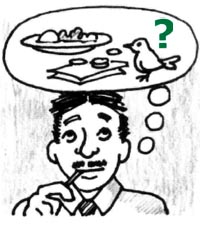
Here are some answers for the Five Cs garden project:
| General objectives Children will learn: | Specific targets (information, concepts, attitudes, skills and behaviour). Children will learn: | |
| What will children learn to do to carry out the project? | To grow carrots, cabbages, cowpeas and cucumber successfully | Transplanting and thinning out; saving seed; watering properly; taking cuttings; planting; and staking (for the yucca hedge) |
| To find and use wild okra and amaranthus for eating | Knowing how to find and prepare wild okra and amaranthus | |
| To use some organic methods | Making and using compost; the idea of crop rotation; integrated pest control; mulching | |
| To prepare and serve dishes, snacks and drinks | Steaming and braising; food hygiene; decorative snacks | |
| To preserve food | Drying and storing cowpeas; pickling cucumbers | |
| What else will children learn? (nutrition, business, environment, other) | Nutritional value of some fruits and vegetables; food combinations | Value of carrots, cowpeas and cabbage To use oil/nuts with carrots, pumpkin, green leaves |
| To appreciate and enjoy the dishes produced | To savour the flavour of raw carrot, cabbage and cucumber, enhanced by oil and salt | |
| The cost of dishes | To cost the additional inputs (e.g. groundnuts, oil, rice) and work out the cost per student per dish. of mulching | |
| Importance of maintaining and enriching the soil | The idea of soil nutrients and how they are used up and replaced; the value and practice | |
| Biology: plant parts | Roots, leaves, stems, fruit and seed | |
| What life skills will they learn? | To manage oneself/ to collaborate/ to keep track of events/to talk about what they do/ to act with adult partners/ to take action for own health and others' | To take responsibility for their own plots; to organize the work in a team; to keep a garden log with pictures; to keep parents informed/ to make gifts for helpers; to decide how to improve their own diet; to help with the hedge |
Again, the watchword is flexibility. You can have only a rough idea of what will be learnt. Pupils do not have to “cover the syllabus”. They may learn less than expected, or more, or (almost certainly) different. The result, at its best, is a dynamic and evolving individualized learning programme, partly led by the teacher, partly by the pupils and partly by the activities, the experience and the environment. The teacher's task is to keep an eye on what is happening, “go with the flow” and encourage whatever is valuable.
B. MONITORING AND RECORD-KEEPING
“Monitoring” is checking that you are doing what you intended. Every manager keeps track of progress in this way. For example, you might notice that a bed of plants is not doing well because it's full of weeds, that the Green Team has mended the fence very well so the chickens can't get through, that one fruit tree is producing much better than the others, or that the members of the Blue Team in the third class are no longer speaking to each other.
More formally, garden managers may be required to keep accounts, maintain a garden log or send in regular reports. Even if there are no such requirements, it is advisable to keep a garden diary in case other teachers have to take over, and for preparing reports or talks.
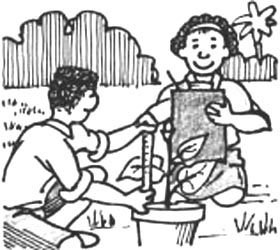
Keeping records is also important educationally for students. It builds up the habits of “taking stock” and “keeping track”, which are key actions in successful enterprises. It helps them to observe closely, recall what they have done, see where they are going and look back afterwards; it reinforces learning and makes them aware of the significance of events. Finally, it produces something to show - to parents, visitors, pupils and the school in general.
Many developments can be monitored. For example :
At different ages, and in different ways, students can do all of these. Monitoring instruments may be:

A Garden Book or wall diary can be kept as a class project, with weekly entries and children's best homework pasted in; a Garden Journal kept by a group or individual can provide a basis for assessment (see the lesson outline The Garden File in Part 3). Some recording activities can be done in the garden, others for homework.
C. EVALUATING

Why evaluate? Evaluation leads into future planning (What shall we do next time? ) and so completes the project cycle. It also has great psycho logical and educational value, especially since, in the learning perspective, failures and problems are as instructive as success. In the cycle of experiential learning, evaluation is part of the process of “reflection”.
What do we evaluate? Evaluation looks back at the project in the light of its original practical and educational objectives (What did we want to do? Did we do it? What did we hope to learn? Did we learn it?). A further question, which should be asked more often, is Did we enjoy it? However, by the end of the year people often do not have a clear picture of everything that has taken place. So the first question to ask in an evaluation is What happened? This may reveal outcomes that were not among the original objectives - some of them mistakes, but some worth recognizing as “retrospective objectives”.
Who should evaluate? The evaluation is a shared responsibility. One of its purposes is to build ownership; everyone who is involved should therefore contribute - children, school staff, parents, helpers, cooks. All should know from the beginning what the objectives are, and should keep an eye on progress through the year. And no one person or group should ever be blamed if the outcomes are not as expected.
How should we evaluate? Evaluation can be done by discussions in class, through focus groups, in an open forum, through a comments box or questionnaire, through informal chats, or a combination of these. It does not usually matter if different groups do it at different times, but it is important to keep records of what they say. Generally small groups are best, with one member of the group making a note of what is said. It is often useful to have a focus group leader who is not directly part of the project - for example, a sympathetic education adviser or a teacher whom everyone respects. A suggested framework for discussion is given in the lesson outline Evaluation.
D. PUBLICIZING
Don't forget publicity! If you are doing something good, make it known (see Visibility Strategies, Part 2.C, and the lesson outline Showing and telling below). Think of who would like to know - local people, sponsors, institutions - and how they would like to be informed. Get children involved in telling them. A simple formula is:
Then invite them to the party!
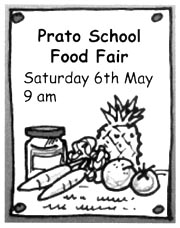
E. CELEBRATION
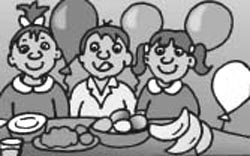
Celebration is essential, both psychologically and socially. Try to end with some kind of jamboree, probably at harvest time. A celebration may be a food fair or harvest festival, a party, a religious service, a sale, a special meal, a performance or presentation, distribution of gift-wrapped produce, and so on (see the lesson outline Celebrations). Everyone who has contributed should be invited.
F. DECIDING THE TIME FRAME
What is your time frame - when does your garden season begin and end? What is the timing for each activity? Should crops be planted so they come to harvest at different times? How much time should we allow at the end for evaluation and celebration? We need to make some plans in advance.
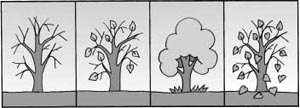
If we are supplying foods from the garden:
Putting this information into visual form makes it easier to use as a planning tool, a point of reference, an aid to presentation, a way to remind people of objectives, or an appeal for help. Possibilities are a flow-diagram, a poster or a project calendar, with illustrations of the proposed activities and indicating all the participants.
G. PROJECT SUMMARY
Once all aspects of the project have been discussed, record the conclusions in a project summary.Work on this with older pupils, as well as with the garden group and colleagues. The questions are:
| Aims | What are our general aims? What is our mission statement? |
| Project | What particular project are we going to do this year? What is its name? |
| Objectives/ | What are our practical objectives and targets? What do we want to produce? |
| Targets | What are our learning objectives and targets? What do we want to learn? |
| Partners | Who will help and how? |
| How will family and community be involved (labour/expertise/contributions/visits)? | |
| Who else will be involved, and how? | |
| Inputs | What inputs will be needed and where will they come from? (seeds, tools, etc.) |
| How much student and teacher time will be required? | |
| Activities | What will we do in the garden (both work and play)? Who will do it? |
| What will we plant, how much and where? | |
| What events will there be in the garden programme? Who will be invited? | |
| Time frame | How are we going to schedule the activities? |
| Monitoring | What will we monitor, and how? What records will we keep? |
| Information | How will the project keep people informed (especially parents, helpers, the head teacher, the LEA, the school)? |
| Publicity | How will we publicize garden activities and create positive attitudes? |
| Evaluation | When will we have the evaluation? Who will be involved? What form will it take? |
| Celebration | When will we celebrate, and how? |
 | SUGGESTIONS FOR ACTION |
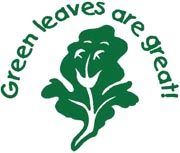
Use the garden's mission statement (see Part 3) to head up documents.
Find a name, motto and logo/emblem for the project.
Discuss and decide on “practical objectives” and “educational objectives”.
Simplify the main project objectives and publicize them in an attractive way - e.g. a poster on the notice board; a presentation by pupils to the Garden Group. Put the mission statement at the top.
Make sure all participants know the main objectives. Ask them to remember them so they will be able to evaluate the project at the end. Remind them half way through the year.
Discuss and decide what records should be kept of garden activities and who should keep them. If records are to be kept by pupils, plan to discuss them in garden lessons.
Discuss and decide how evaluation will be done.
Produce a short project summary (headed by the mission statement), put a copy in the garden file and give copies to the head teacher, the parent-teacher association, the local education authority, etc.
Outputs: Project name, motto and logo
Visual presentation of objectives and activities
Project summary
| TIPS AND IDEAS |
|
 | IN THE CLASSROOM |
Overview These four lessons should be distributed through the school year: The project plan is drawn up when the project begins; publicity work (Showing and telling) can be done at any time in the project; Evaluation and Celebrations belong to the final stages.
1. Project plan should be done once the main decisions have been taken.
Objectives Pupils become aware of their expectations; older students create a summary of the project plan for presentation to the outside world. (N.B. The teacher should find someone who is prepared to receive, read and respond to the project summary produced in this lesson.)
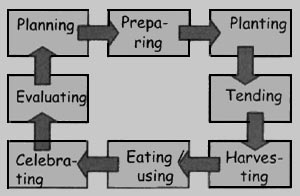
Activities Pupils learn that Mr/Ms × wants to know about the garden project and has asked for information about it. This lesson is to prepare the summary. Pupils discuss a set of questions about the project (adapted from section G above) and record their answers. Older pupils work in groups on one section each, appoint a secretary and draft their response. The final version is read out for approval by the whole class. The information is delivered to Mr/Ms X, who should respond to it in writing or in person. To follow up, older students use the information to create a visual summary for display in the form of a flow-diagram, a publicity poster, a crop calendar or a workplan.
2. Showing and telling brings the school closer to the community, and children learn by talking.
Objectives Pupils appreciate the need to tell people about the garden and choose suitable content and channels for their messages. (N.B. The teacher should prepare the ground by finding out who in the school or community will respond positively to hearing from school pupils.)

Activities Pupils recount what has happened in the garden so far and discuss who would like to know about these things and why (e.g. parents and families, people in the school, garden helpers, the local media, other schools, the general public, local organizations). They stick up paper figures with names on them and discuss what they will tell them or show them (e.g. garden plants or products, the project plan, events, achievements, accounts, funny stories) - and how (see below).
Ways of showing and telling
| Personal letters, greetings cards Book of garden stories Samples/free gifts Showing and telling at home Guided garden tours Invitation to the class | Circulars, newsletters Photos, drawings on display Posters, notices, fliers Talks/presentations Exhibitions, displays | Plays/dramatizations/shows Interviews on radio/TV Articles in the local newspaper Bring and Buy sales Food tastings Parties |
3. Evaluation helps to diagnose problems, plan for the future and involve the community.
Objectives Pupils recall the year's gardening and reflect on it. They acknowledge others' help and congratulate themselves. (N.B. Teachers should ensure that all garden records are available and that all involved contribute to the evaluation and share their impressions.)

Activities Pupils recall the year's events and activities, triumphs and disasters, and express satisfaction or dissatisfaction. Older students recall the objectives and targets from the project plan, say how far these were achieved, why and why not, and spell out the lessons for the future. Pupils recall all those who have helped and discuss how to thank them. The class chooses the class's three top gardeners and awards them “Great Gardener” rosettes. Finally they award themselves a gardening prize (rosette, cup, shield), choosing between Excellent, Very Good and Not Bad, and finish with a self-congratulatory cheer. Follow-up consists of thank-you notes, cards or gifts.
4. Celebrations There should always be a celebration, and children should help to organize it.
Objectives Pupils are aware of the need for a celebration, think of who should participate and help to plan and organize the event.
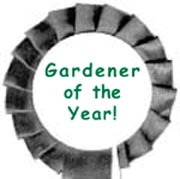
Activities The teacher announces the celebration and gives date, place, time and the general nature of the event. The class thinks of a name for the event; lists the participants and decides how to invite them; plans the programme; discusses refreshments, gifts, decorations and displays; and organizes the work to be done. For follow-up, students organize their part in the event. Some kinds of celebration are a Food Fair, an Open Day, a harvest festival, a special meal, a party. Some ways to celebrate are competitions, decorations, demonstrations, displays/exhibitions, flags, gift-wrapped produce, guided tours, dramatic performances, presentations, posters, songs and dances, refreshments, special dishes and tasting sessions, story-telling, prize-giving.